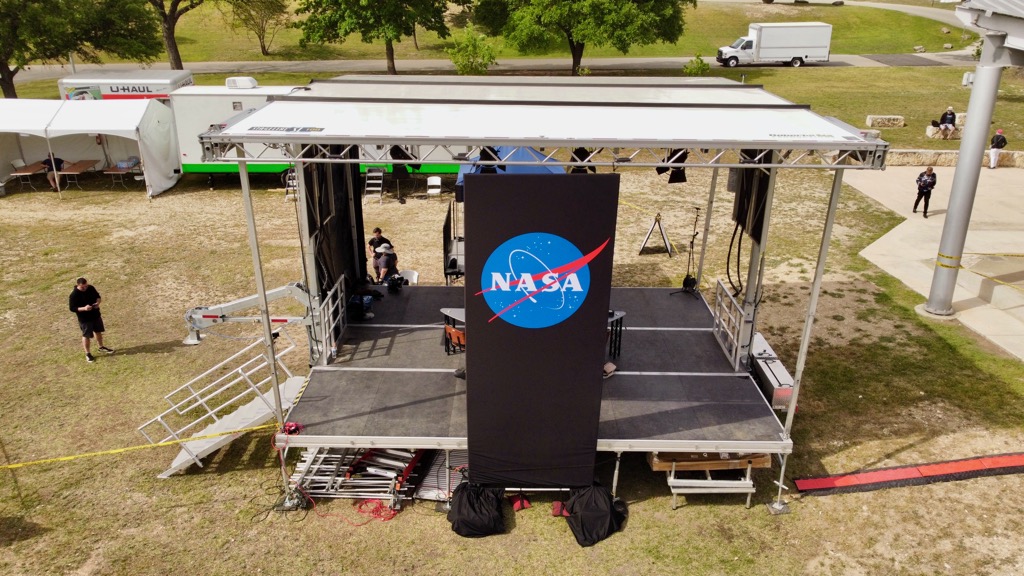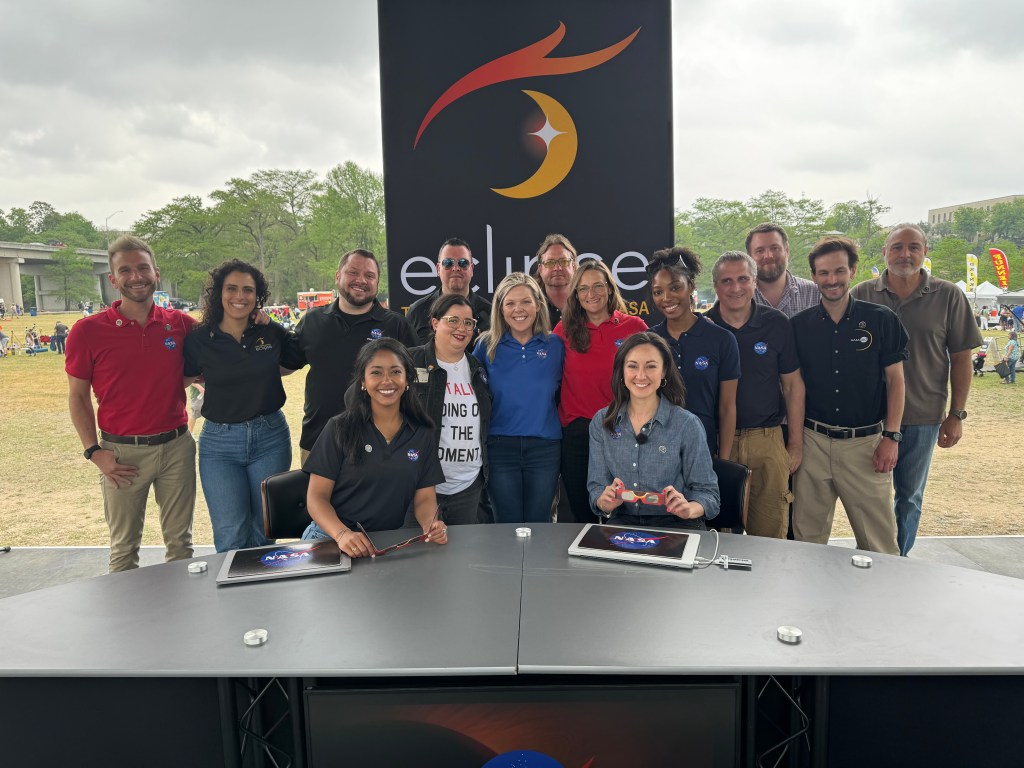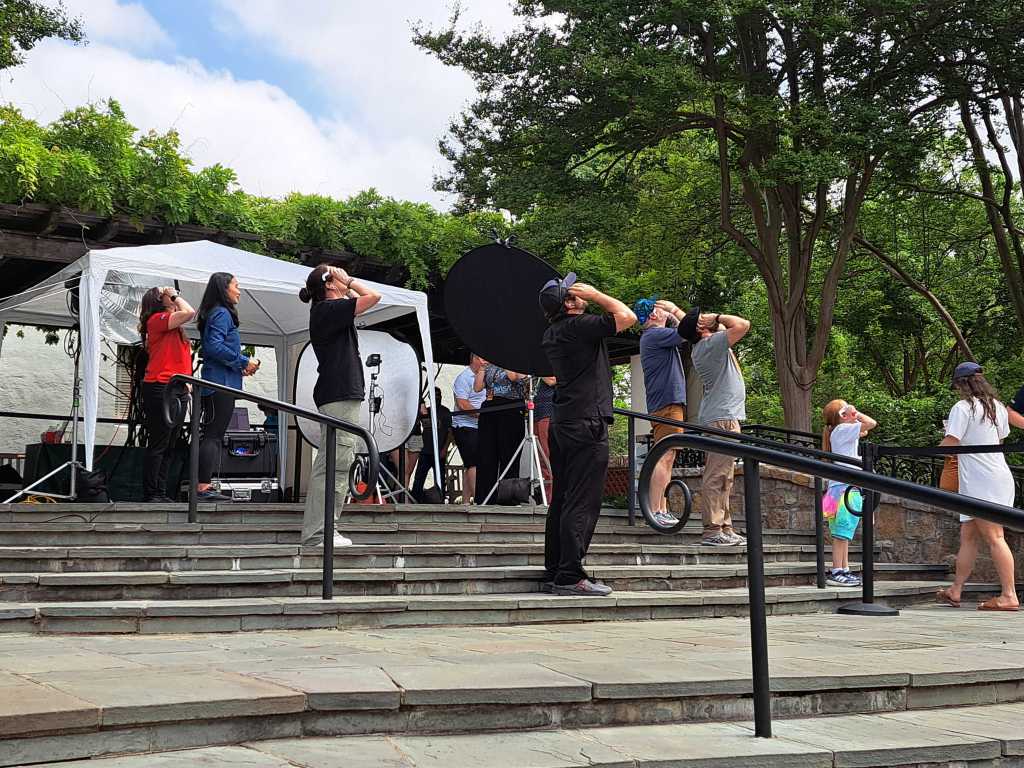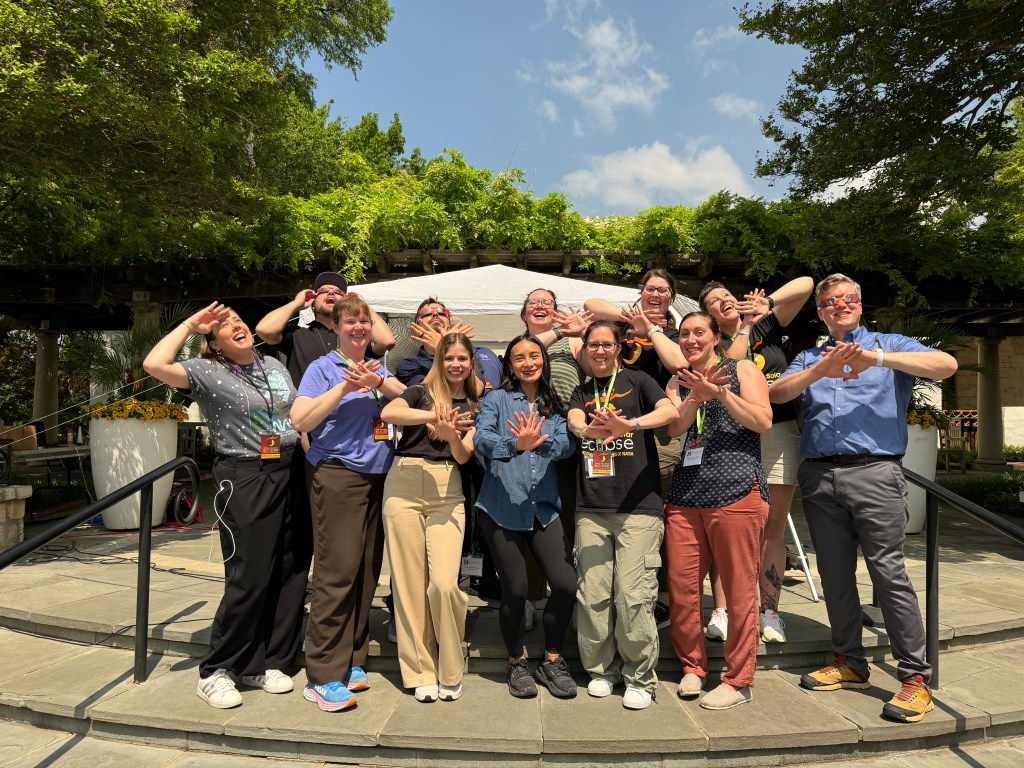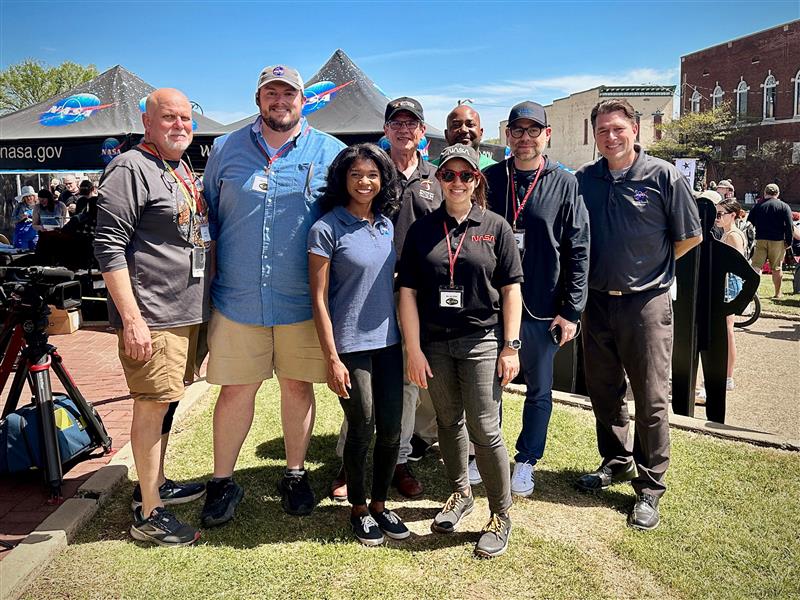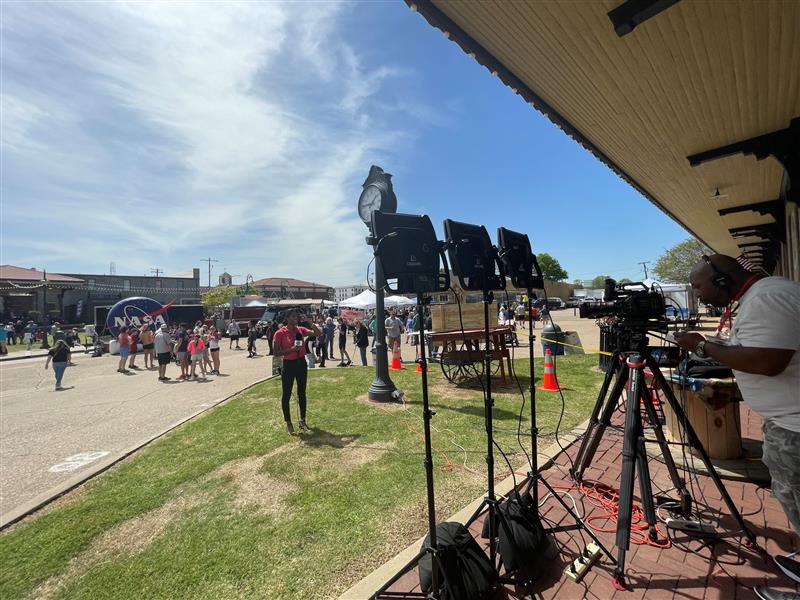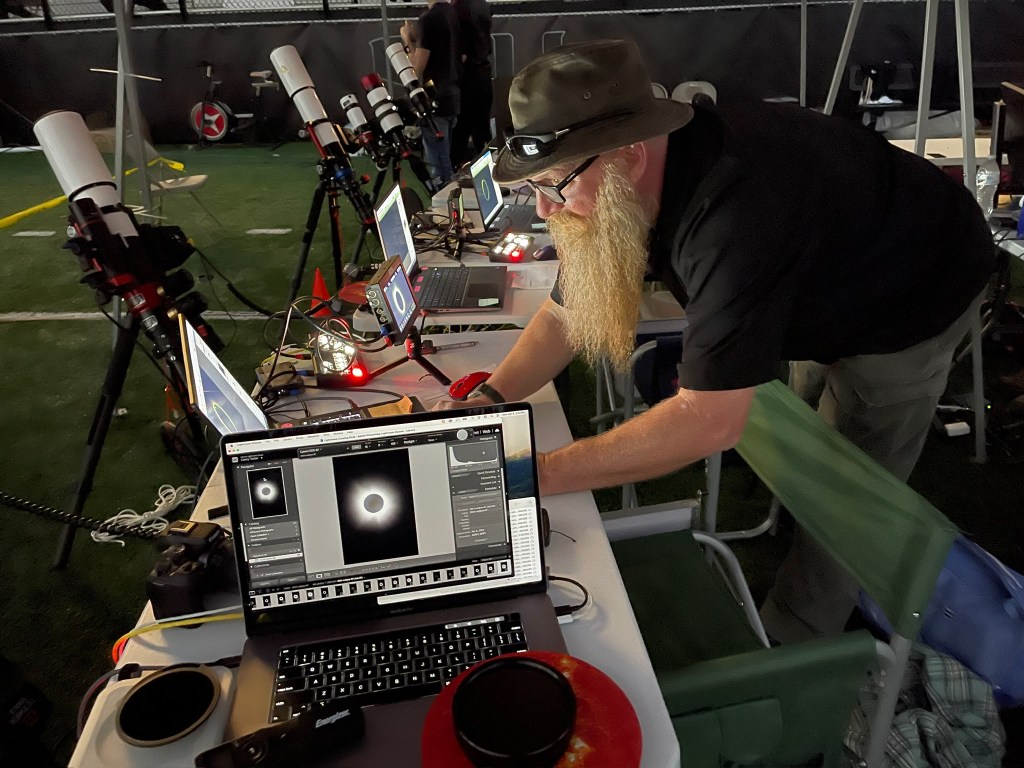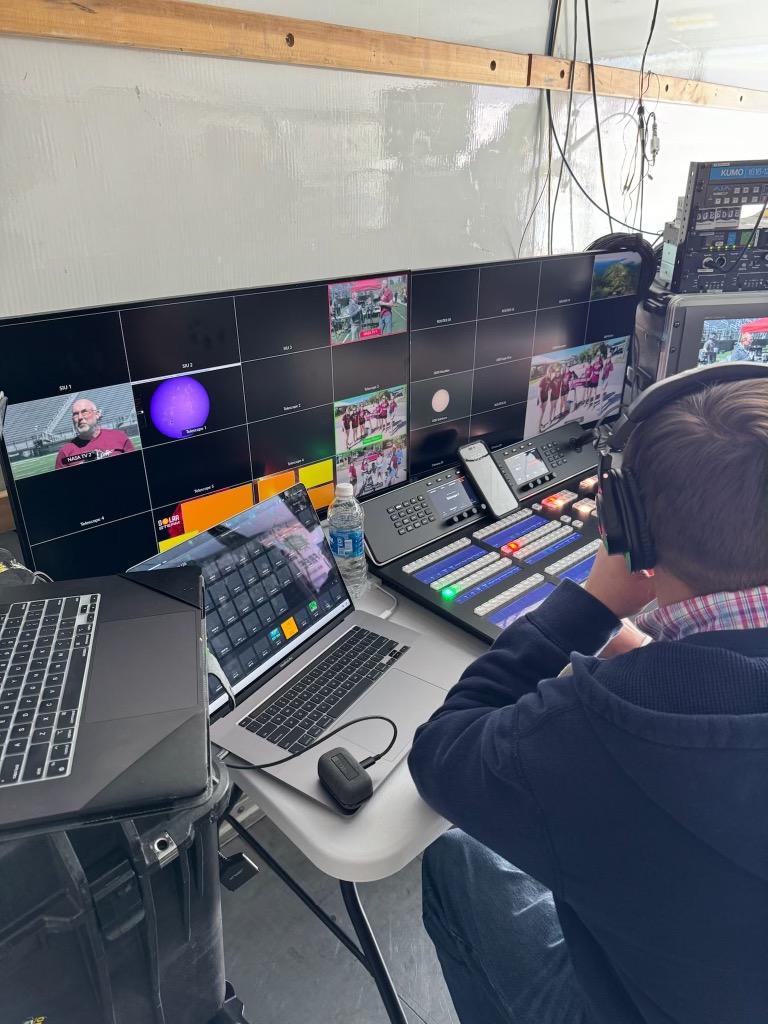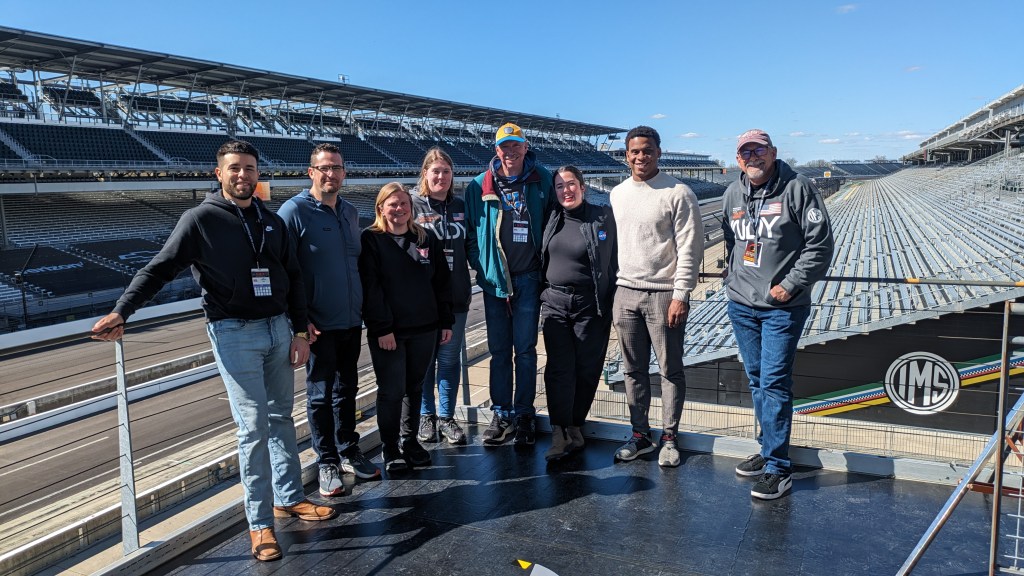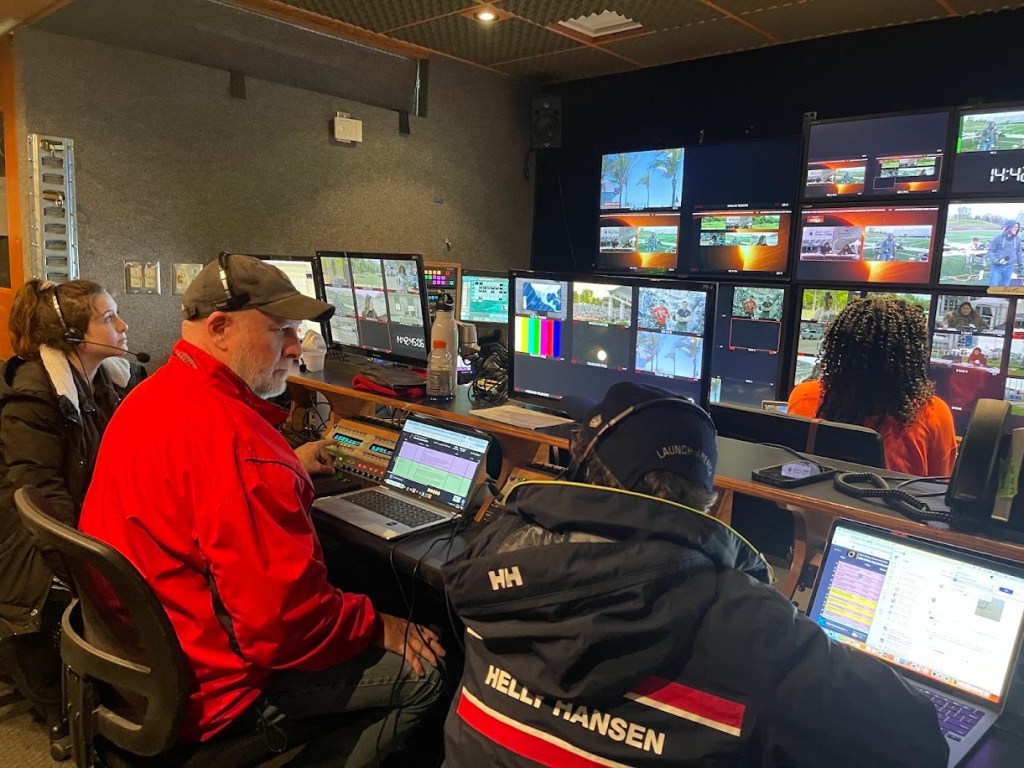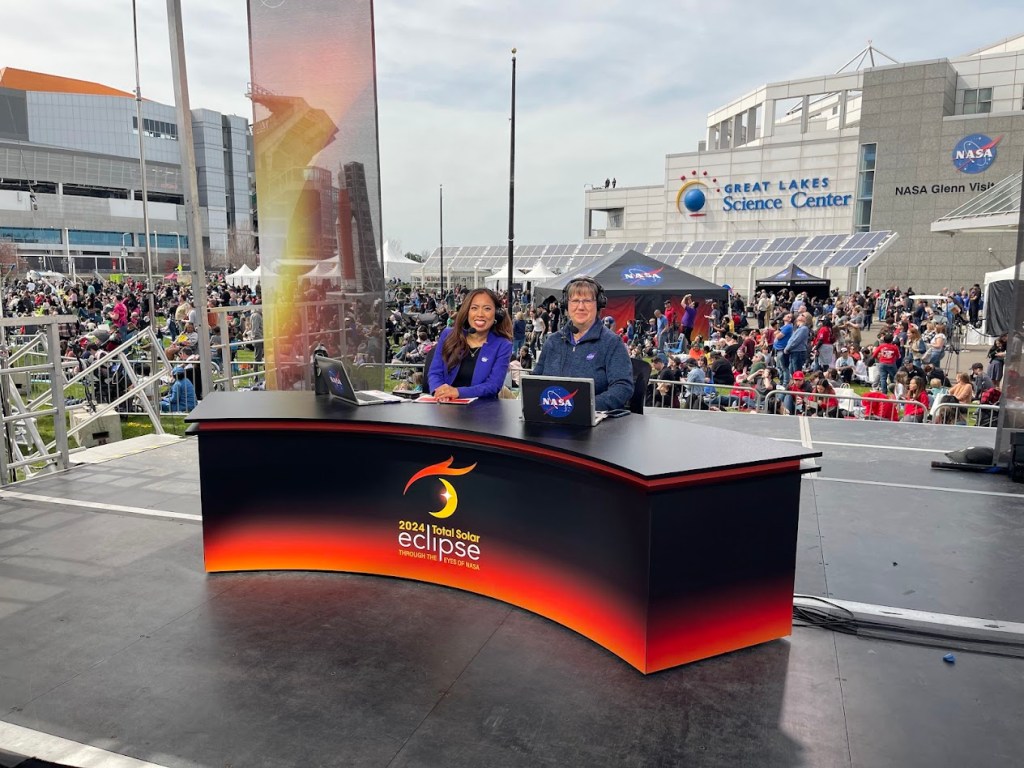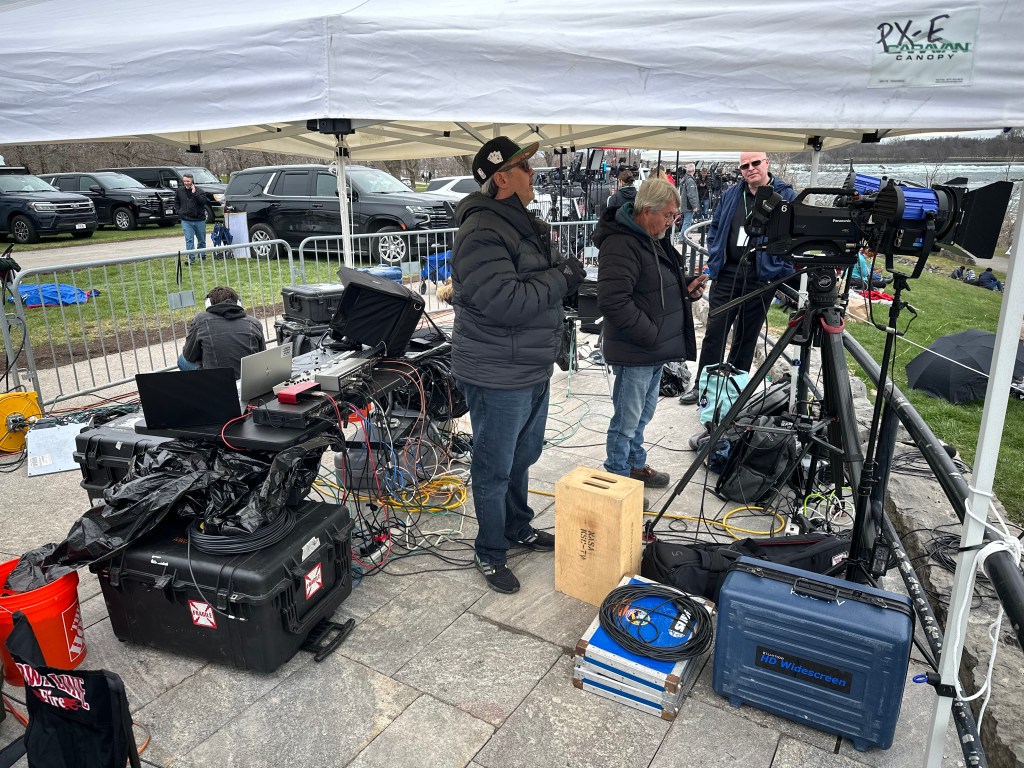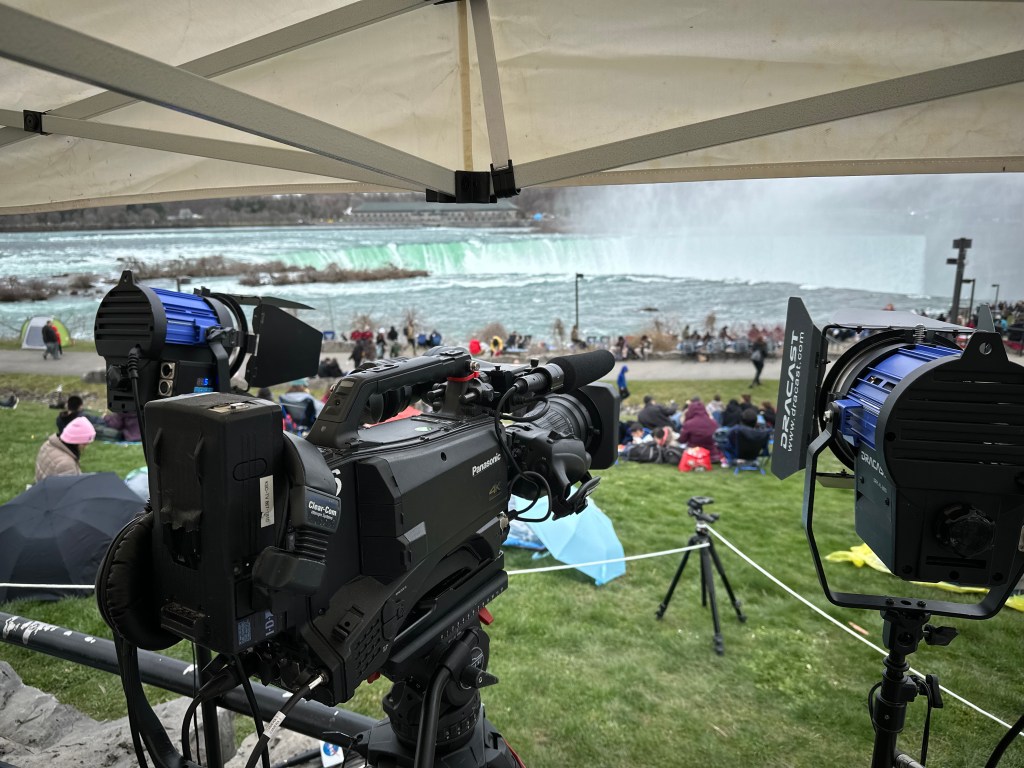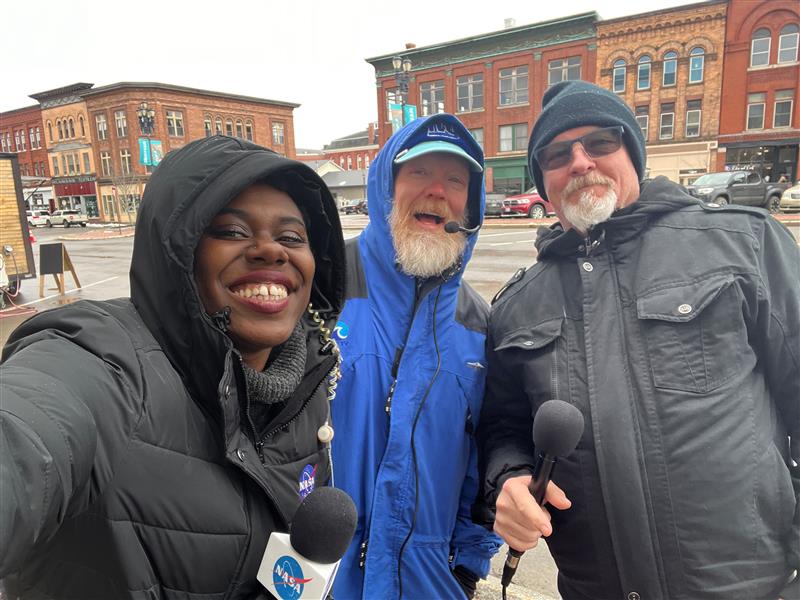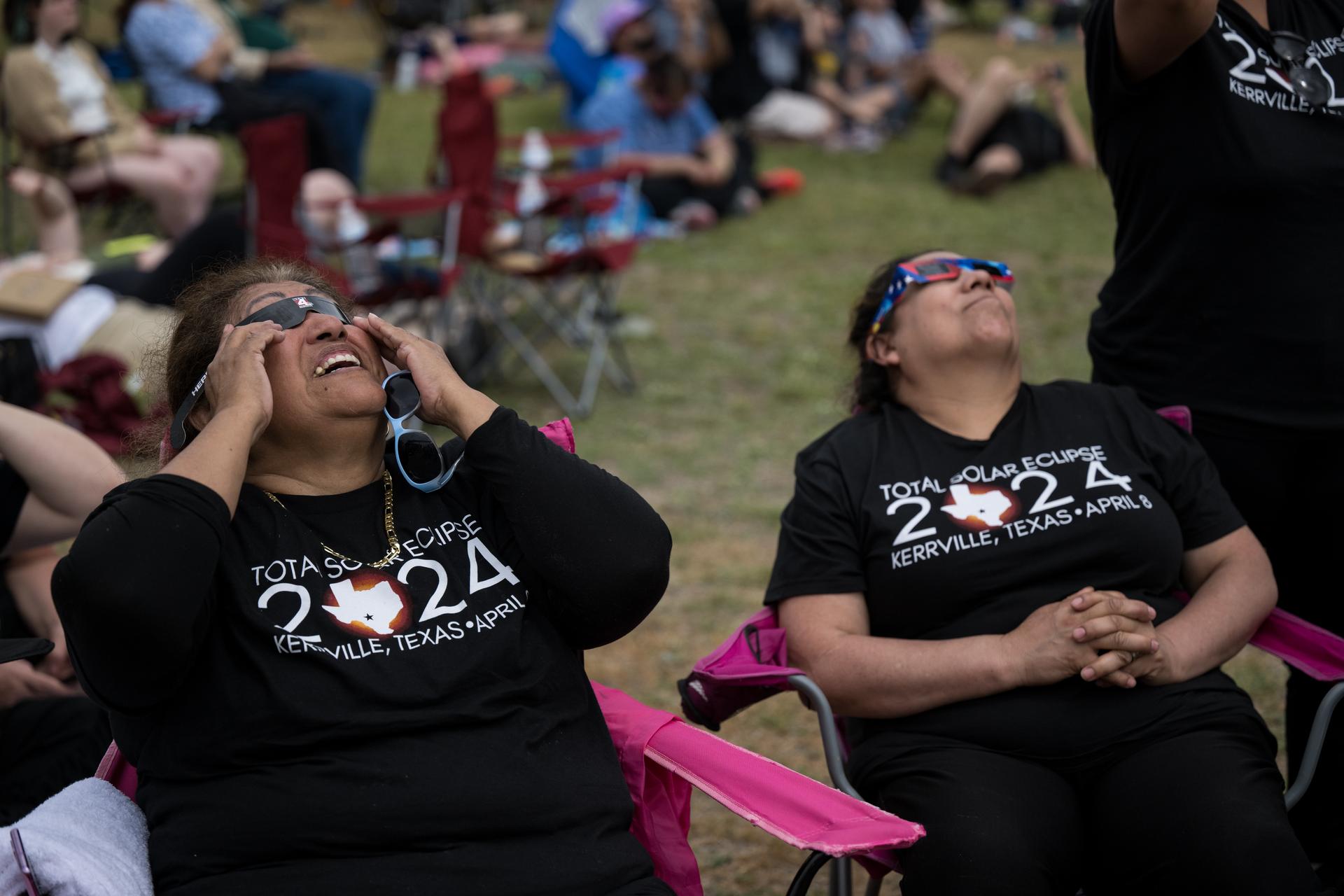
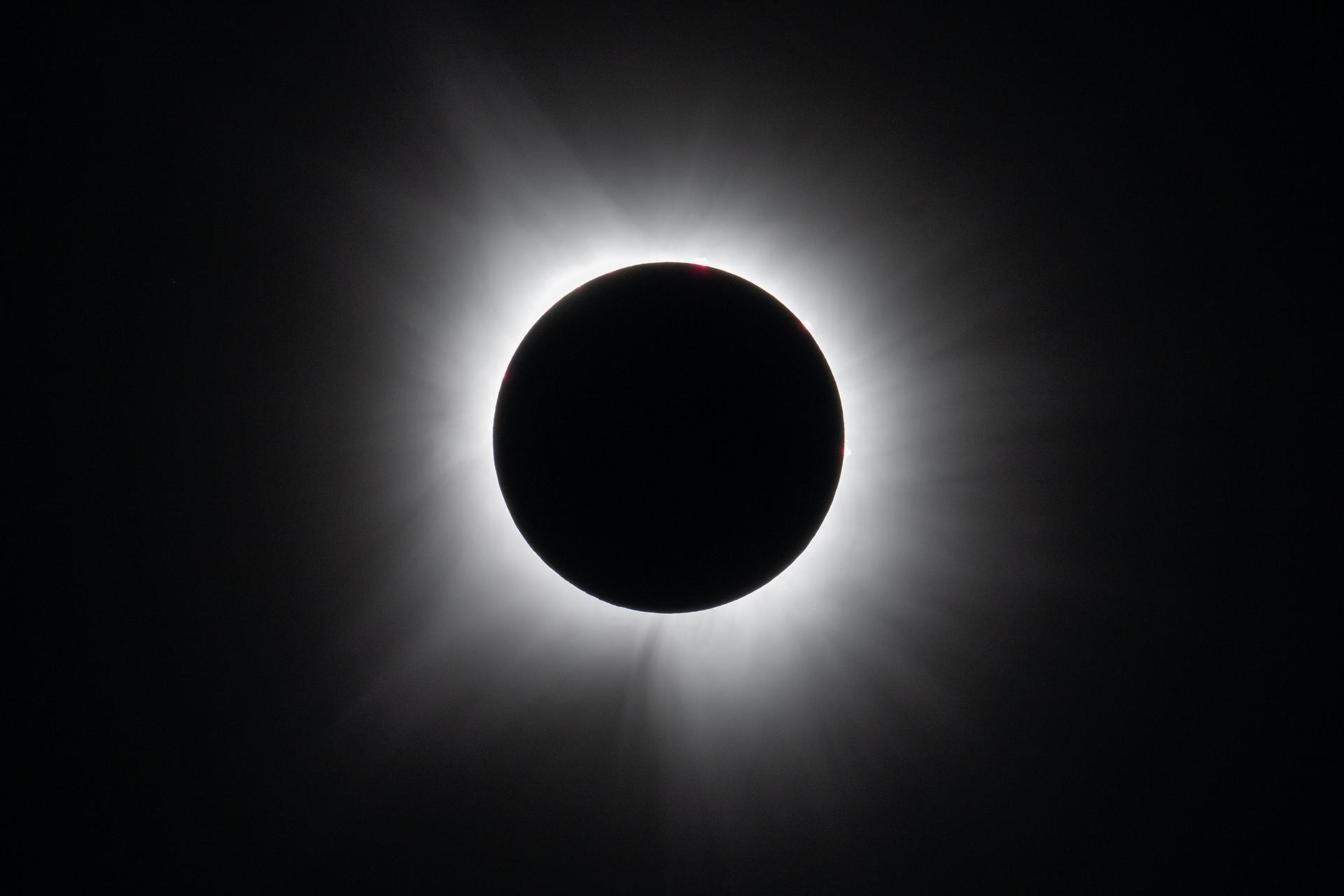

2024 Total Solar Eclipse: Through the Eyes of NASA
NASA’s Live Broadcast Coverage
On April 8, 2024, the United States experienced the joy and awe of a total solar eclipse, spanning 15 states from Texas through Maine. All 48 states in the contiguous United States had the opportunity to witness at least a partial solar eclipse, weather permitting.
As part of the NASA Science Mission Directorate’s Heliophysics Big Year, NASA played a key role in enabling safe participation in this celestial event and reached new audiences. To further engage the public, NASA broadcast this event on NASA+, the NASA App, NASA.gov, and multiple NASA social media channels.
Peak Concurrent Livestream Views
1,458,212
Total Livestream Views
~40 Million
Social Platforms
YouTube, Facebook, X, Twitch, Instagram
Views from
The Ground, Earth's Atmosphere, and Space
2024 Total Solar Eclipse: Through the Eyes of NASA
Planning efforts for NASA’s total solar eclipse broadcast began 18 months in advance with a site visit in January 2023 to Kerrville, Texas, a city lucky enough to be at the crossroads of the “ring of fire” annular solar eclipse and total solar eclipse, just 6 months apart. NASA’s coverage of the annular eclipse in October 2023 served as a proving ground and ensured the infrastructure existed to support the larger total solar eclipse effort in April 2024.
NASA's Broadcast PageCredits: NASA
By the Numbers
The April 8, 2024 Total Eclipse Broadcast effort was the most ambitious live video project ever attempted by NASA.
- 3 hour coverage that spanned 3,000 miles across 7 states and 2 countries
- 11 hosts and correspondents provided on air commentary, interviews and coverage
- 20 telescope feeds
- 9 watch party locations - Austin Public Library to NYC Times Square
- 1 interactive “Eclipse Board” provided real time data analysis
- 1 live feed from astronauts aboard the International Space Station
- 1 live view from NASA’s WB-57 high-altitude research aircraft
To make this possible, NASA deployed and enabled 67 cameras, 6 NASA Wide Area Network (WAN) control rooms, 38 encoders, 35 decoders, and 300+ production crew members. 20 live telescope feeds represented 12 locations across the path of totality. An internet-based intercom system was introduced with over 100 active users for production coordination and mix minus audio to on air talent. All of this was done via Internet Protocol (IP), at a scale never before endeavored by NASA.
In total, NASA experienced almost 40 million views across its own distribution. Externally, the main broadcast was picked up in 2,208 hits on 568 channels in 25 countries. The telescope feed broadcast was picked up on an additional 552 hits on 317 channels in 32 countries.





























